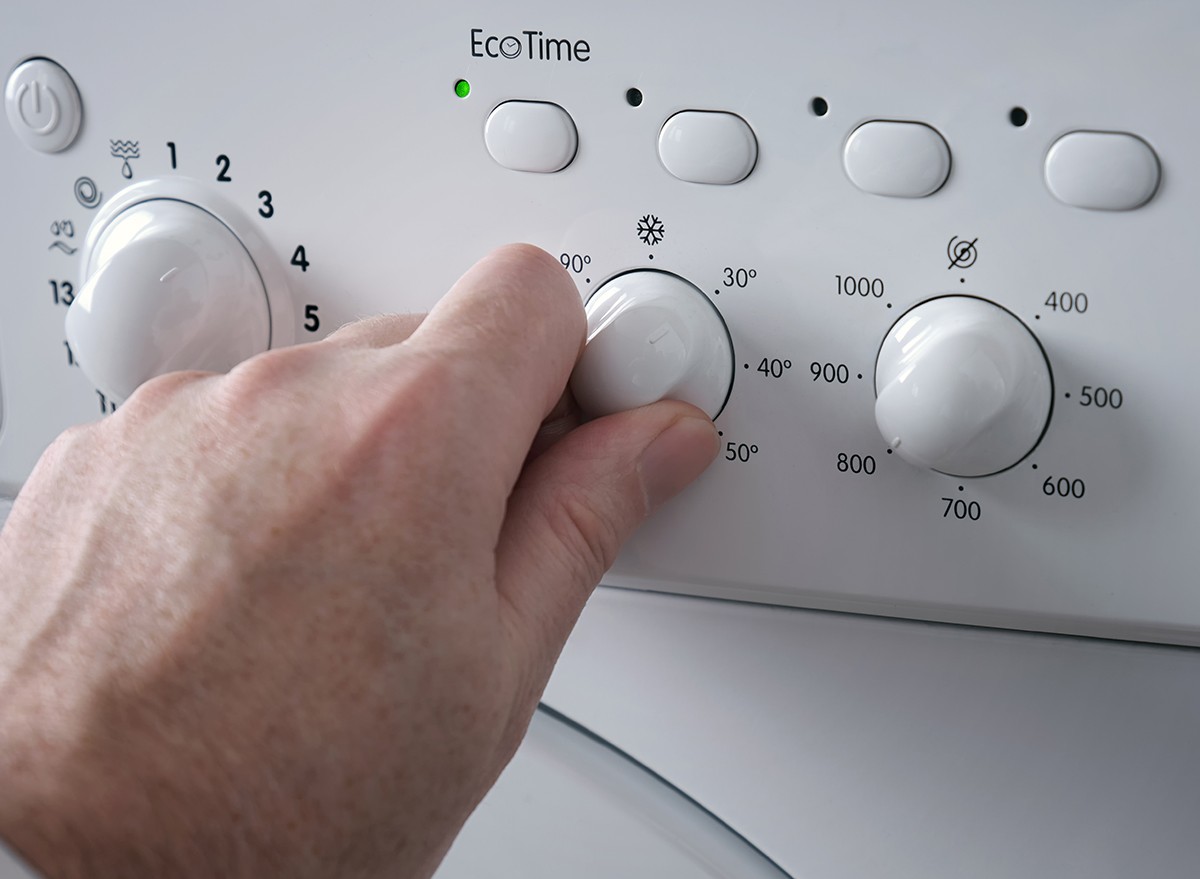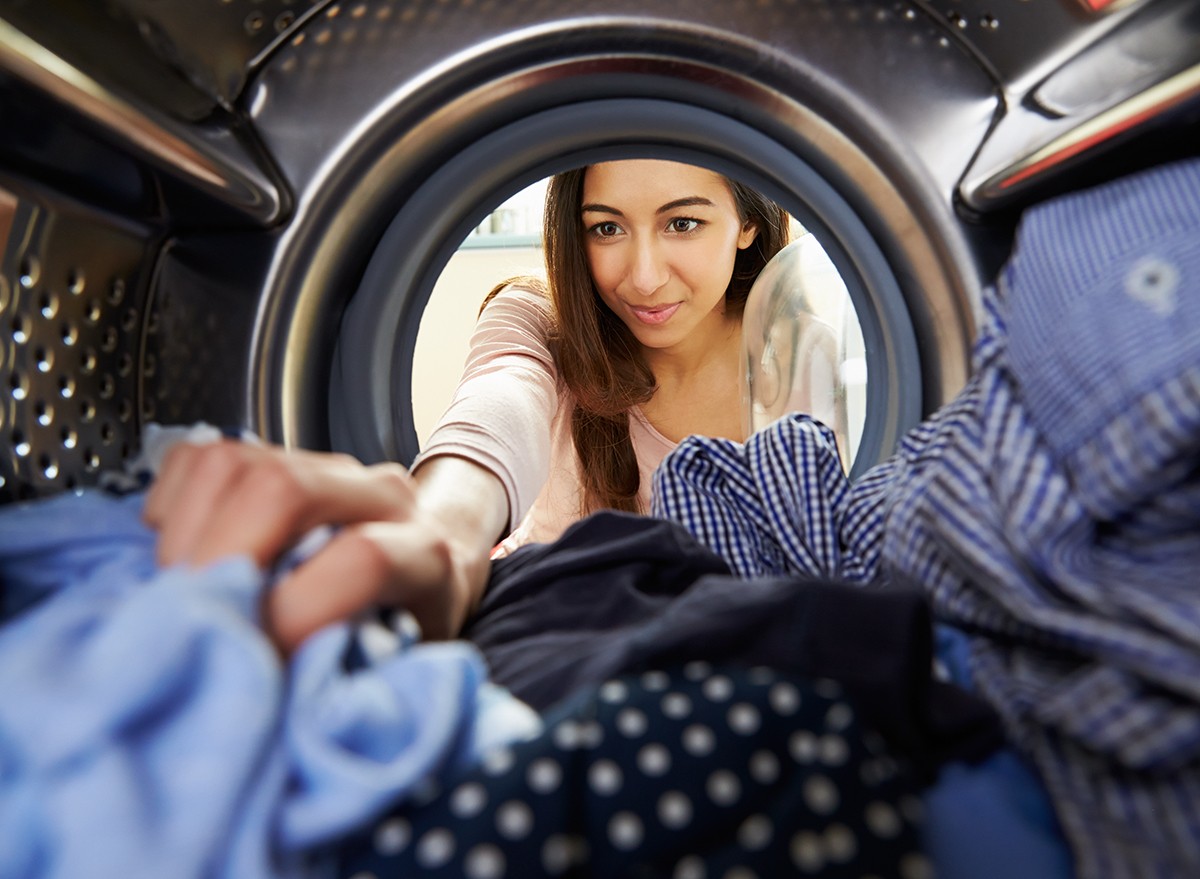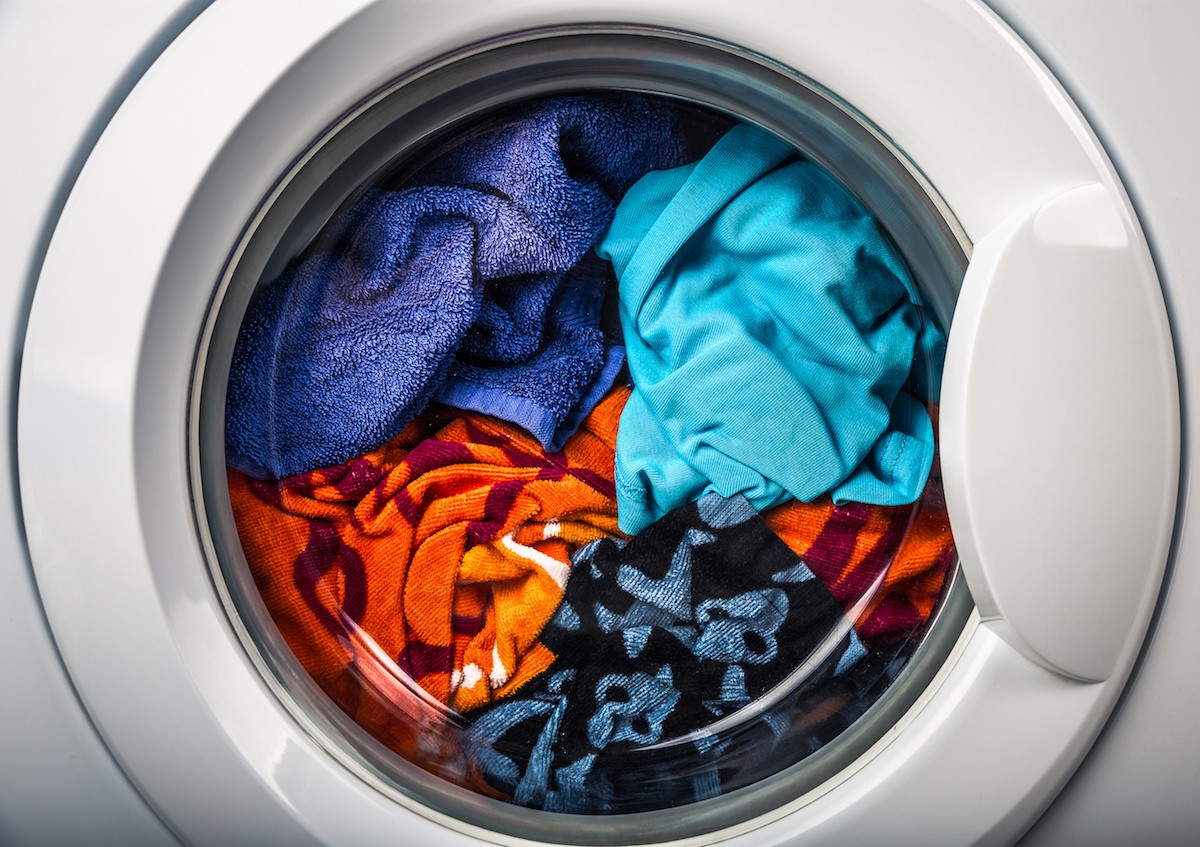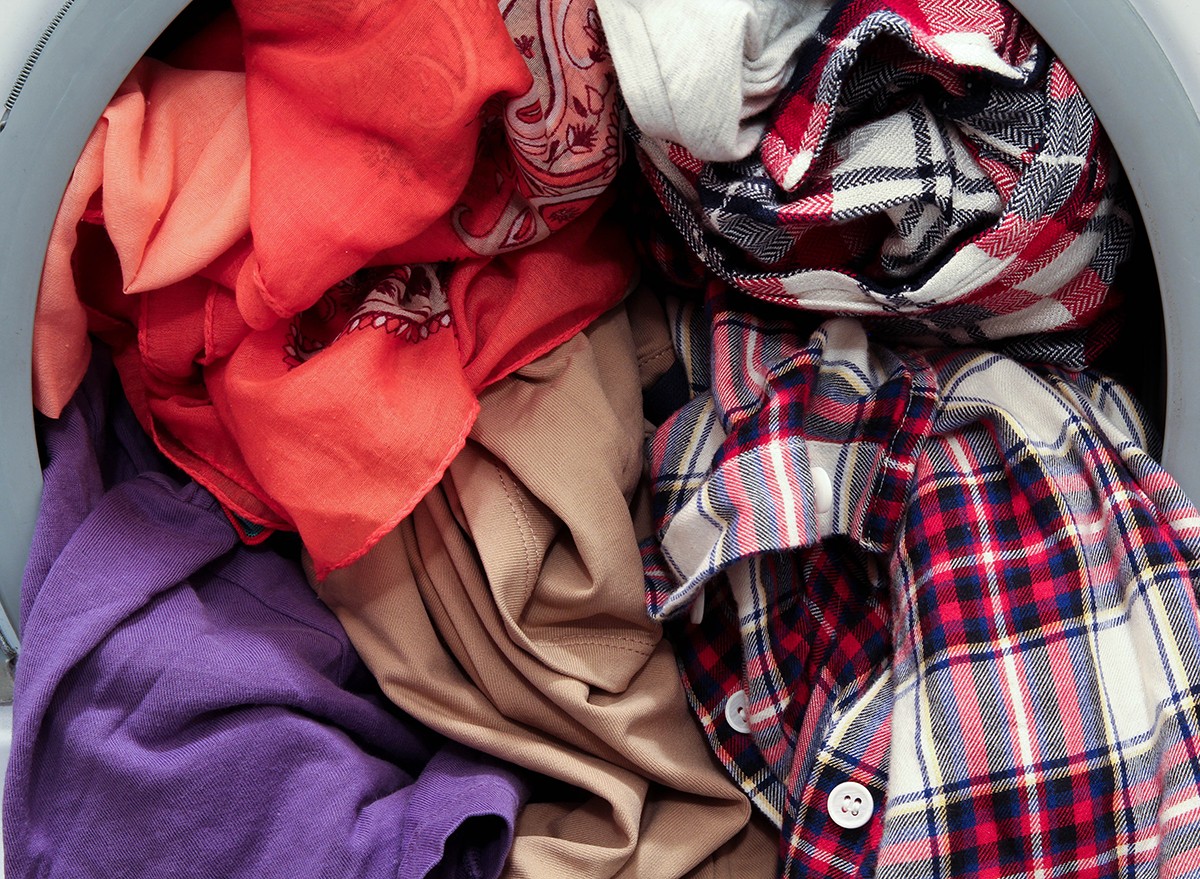The No. 1 Mistake You’re Making When Washing Your Clothes

What temperature are you washing your clothes on? Chances are, it’s the hot water cycle, and this could wreak havoc on your fabrics and cause stubborn stains to become impossible to remove. “By design, modern washers are well equipped to handle cold water,” says GE Appliances. “Not only are modern washers designed for cold water, but many detergents have enzymes that can start to work in temperatures as low as 60℉, and cold-water detergent also enhances results.” Here’s what the experts say.
RELATED: This Clever Hack Will Keep Your Laundry Smelling Fresh.
Hot Water and Stains

Cold water is best for removing specific stains. “Not all stains respond to warmer water,” says GE. “For example, blood and sweat can actually set into fabric in hot water. Also, hot water tends to shrink, fade, and wrinkle certain fabrics.” There is an exception, of course. “If sanitizing is the goal—say you or someone in your family is sick—washing clothing and bedding in hot water can help stop the spread of germs.”
Protecting Fabrics

Washing clothes on the cold cycle can help protect your clothes. “Laundering your clothes gets them clean but also breaks down the clothing fibers,” says Arm & Hammer. “Hot water is more damaging to clothing fibers, leading to them wearing out faster and shedding more microfiber particles. Washing in cold helps protect your fabrics to keep them looking newer longer. Extending the life of clothing can also help reduce the amount of textiles being added to landfills.”
Prevents Fading

Cold water can help prevent color fading. “Washing in cold water can help slow fading of colors and shrinking in fabrics,” Stephen Hettinger, director of engineering in washer systems at GE Appliances, tells Better Homes & Gardens. “Testing shows that warm water or hot water helps accelerate fading in darker colors.”
Wrinkle Prevention

Doing laundry with cold water can help prevent wrinkles in your clothing. “Cold water is less damaging to most fabric fibers than hot water, especially wrinkle-prone fabric such as cotton and linen,” says Arm & Hammer. “Follow the manufacturer’s care label for water temperature and never wash in water that’s hotter than recommended. Another tip to help prevent wrinkling in your clothes: don’t overload the washing machine and remove items promptly from both the washer and the dryer.”
RELATED: How Often Do You Wash Your Sheets?
Not Too Cold

Add a small amount of hot water to activate the detergent if your tap water falls 60 degrees F. “Washing with tap cold in Minnesota in January is very different than washing with tap cold in Florida in the summertime,” Hettinger says.
Saving Money

Choosing a cold cycle could save you money on bills. “Choosing the right water temperature is more than just flexing your laundry mastery muscles; it’s also a choice that matters for your clothes, your wallet, and the planet,” says Arm & Hammer. “According to Energy Star, 90% of the energy used to operate a washing machine is spent on heating the water. Energy Star estimates that switching from hot to warm water cuts energy use in half and switching to cold reduces energy use even more. Using less energy is good for the planet and can help reduce your electric bills.”
Don’t Overload Machine

Even if you use cold water, try not to overload your machine. “Overloading a washer can make it difficult for a washer to work well because the clothes can’t circulate, tumble, or bounce through the wash solution freely so they won’t get as clean,” Mary Gagliardi, also known as Dr. Laundry, Clorox’s in-house scientist and cleaning expert, tells Martha Stewart. “An overloaded washer may have difficulty balancing the load, which is necessary to achieve high spin speeds to adequately extract wash and rinse water from load.”